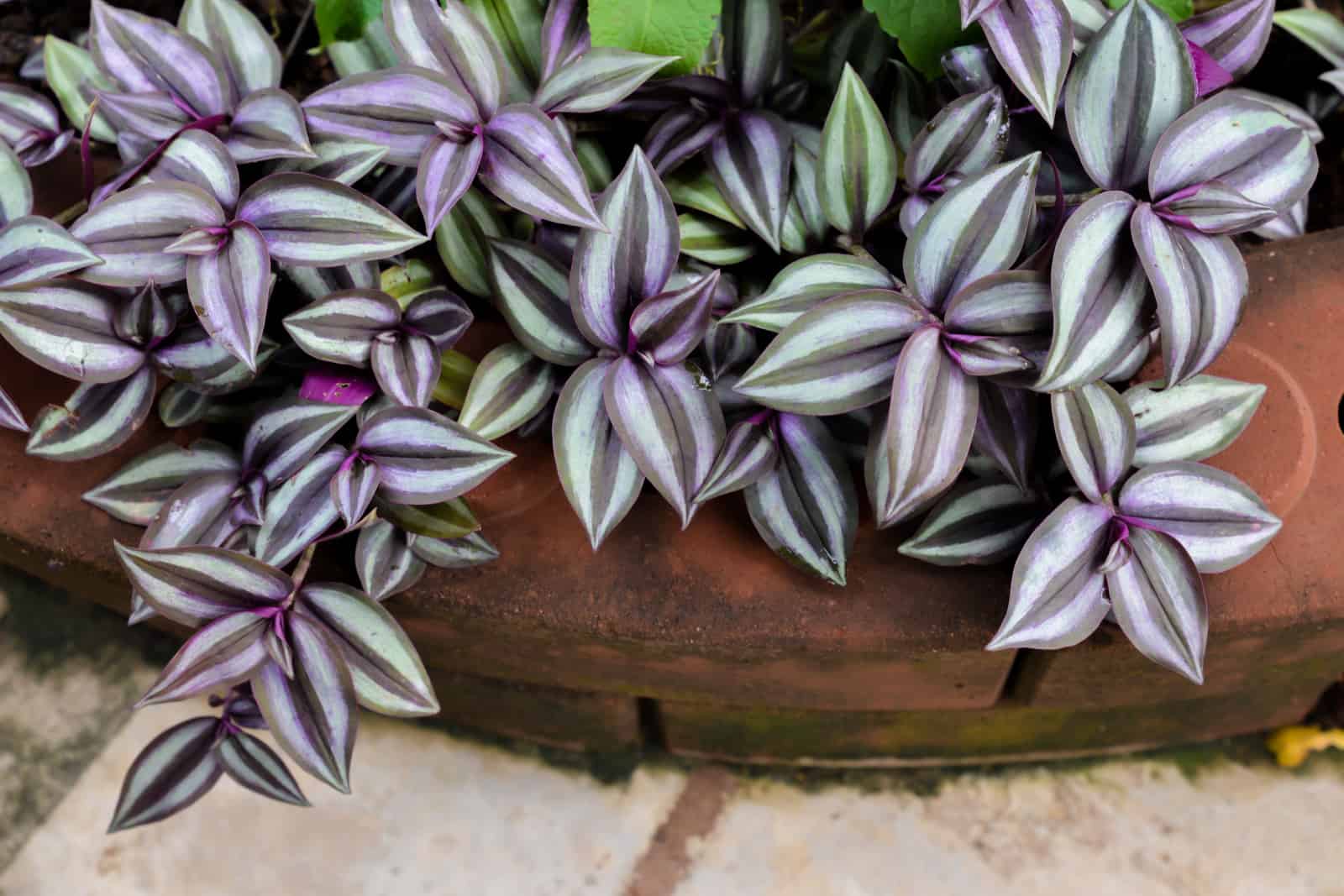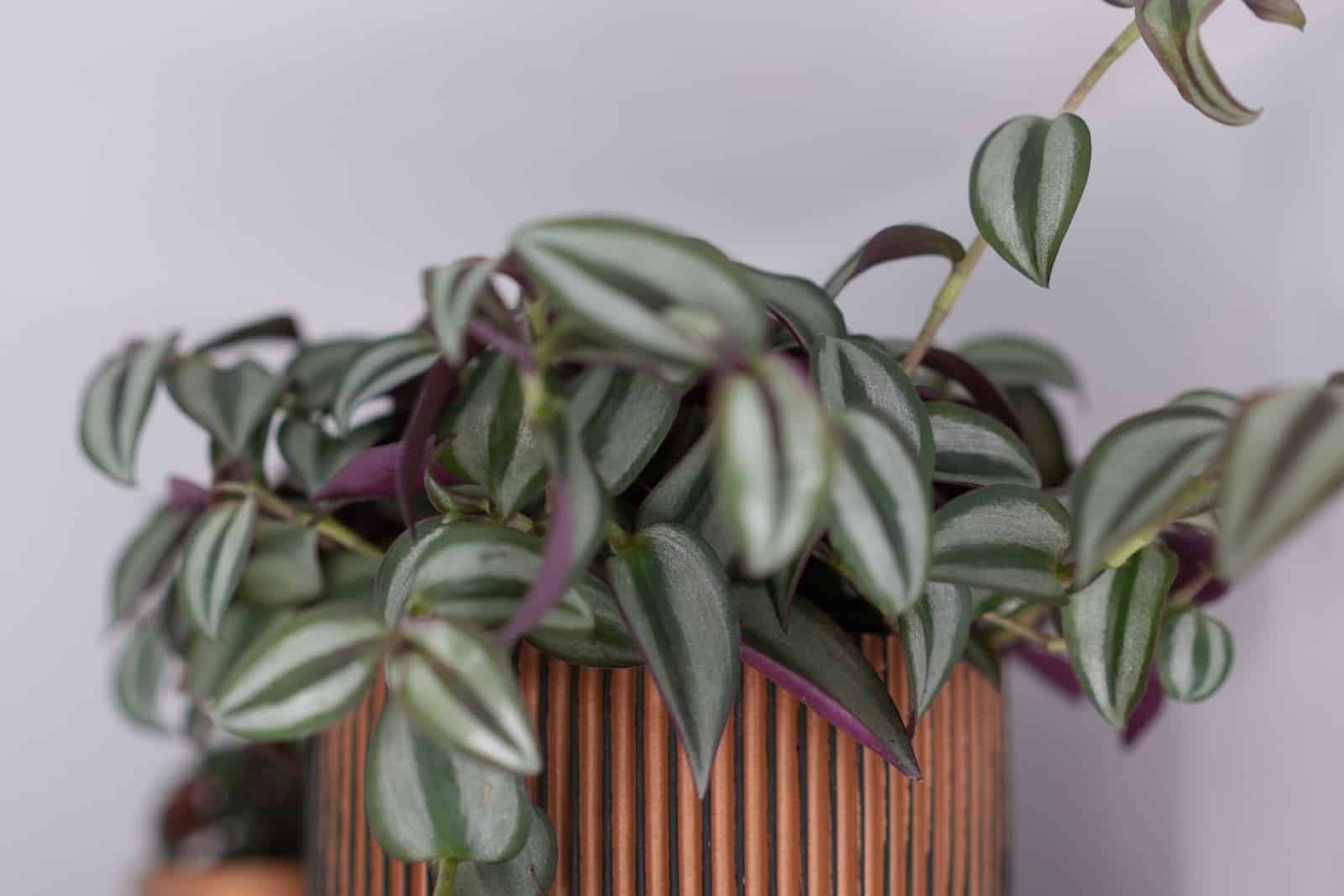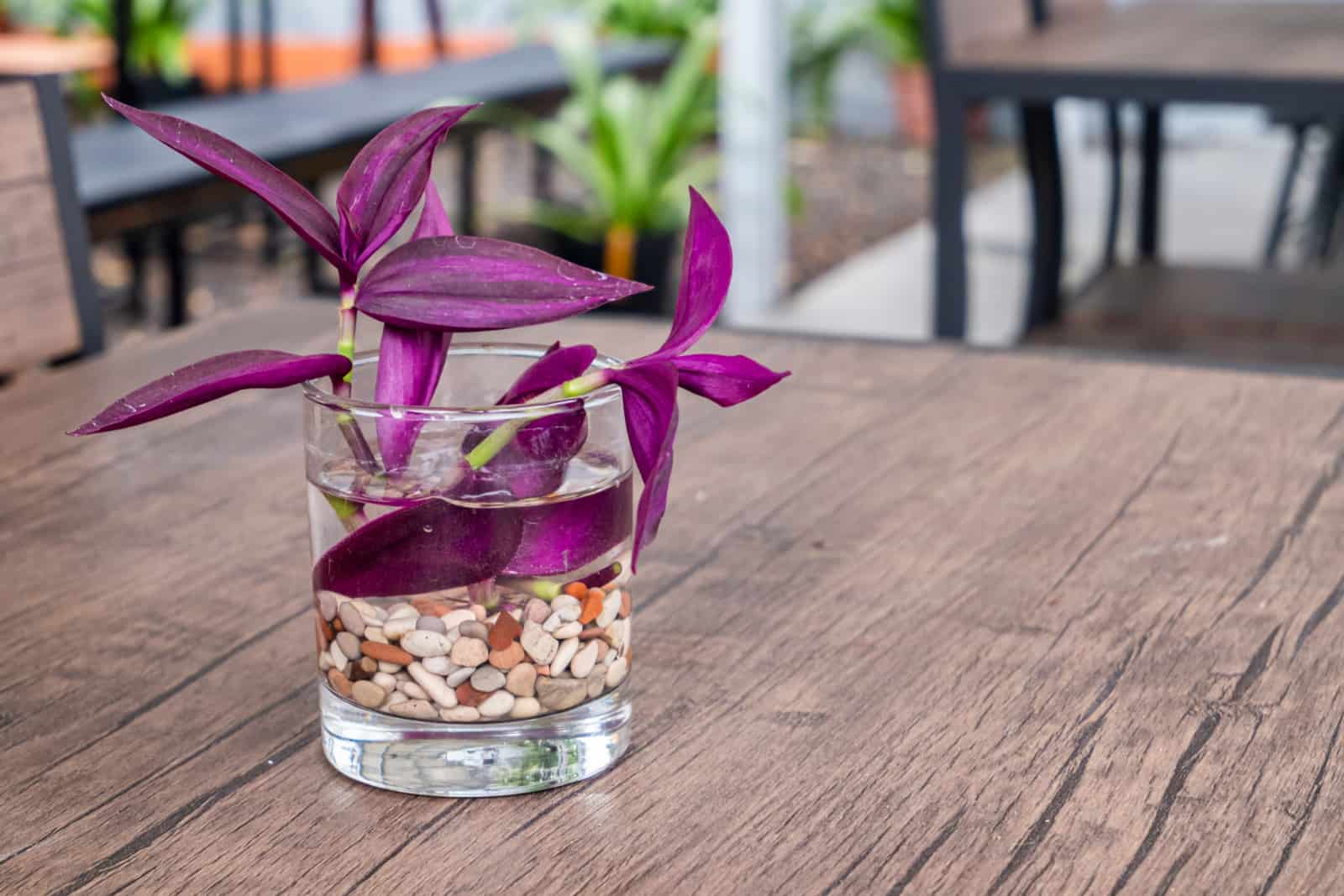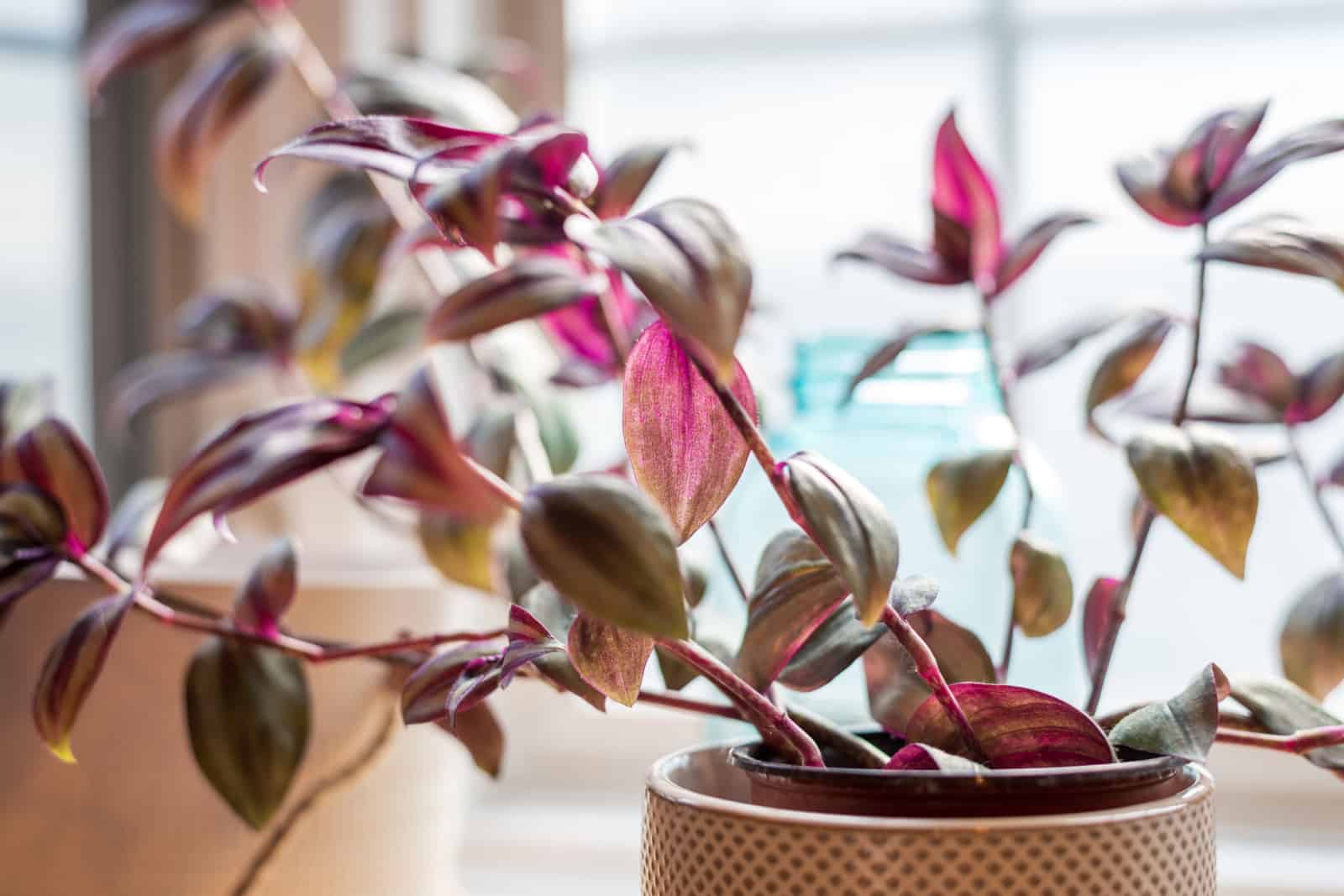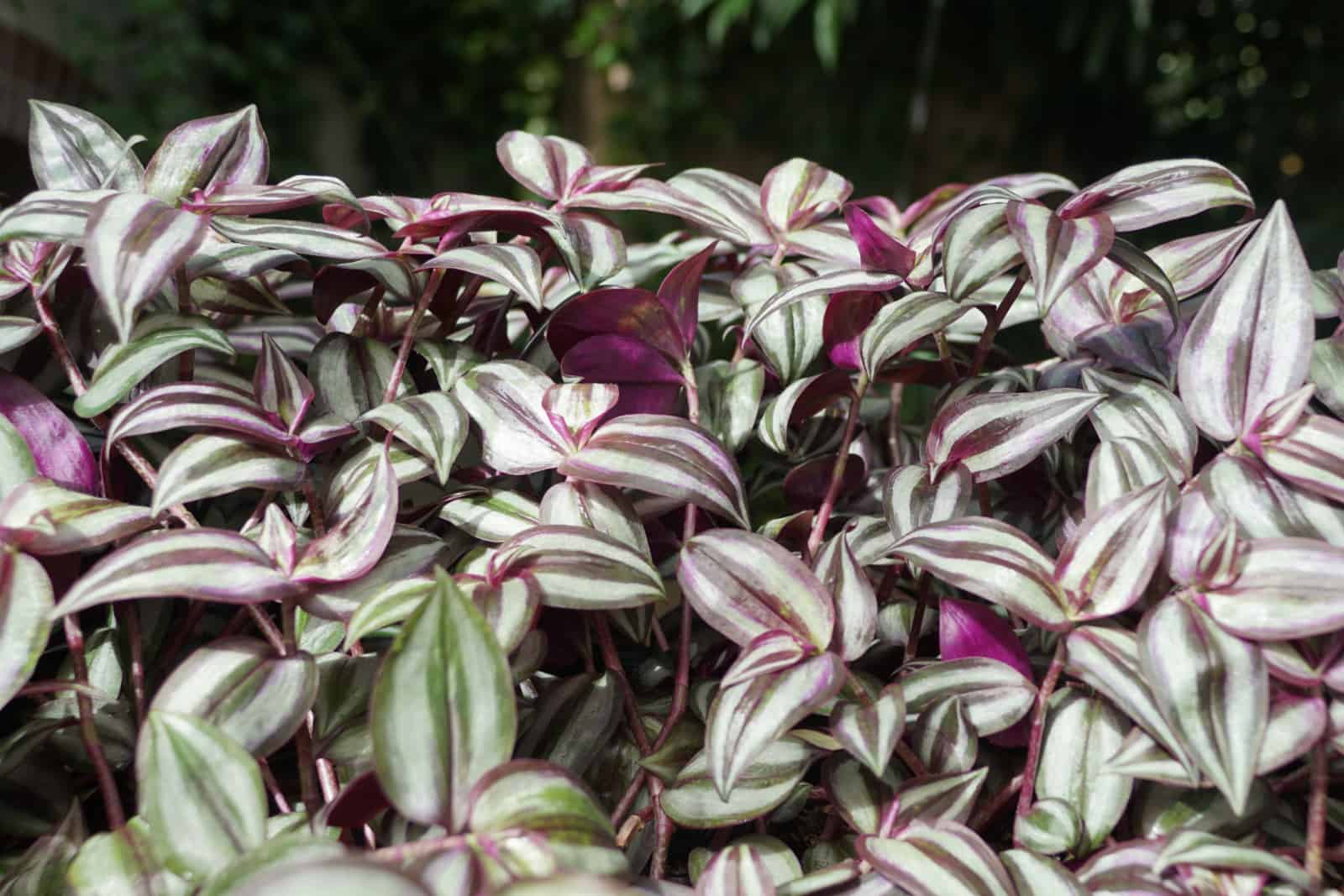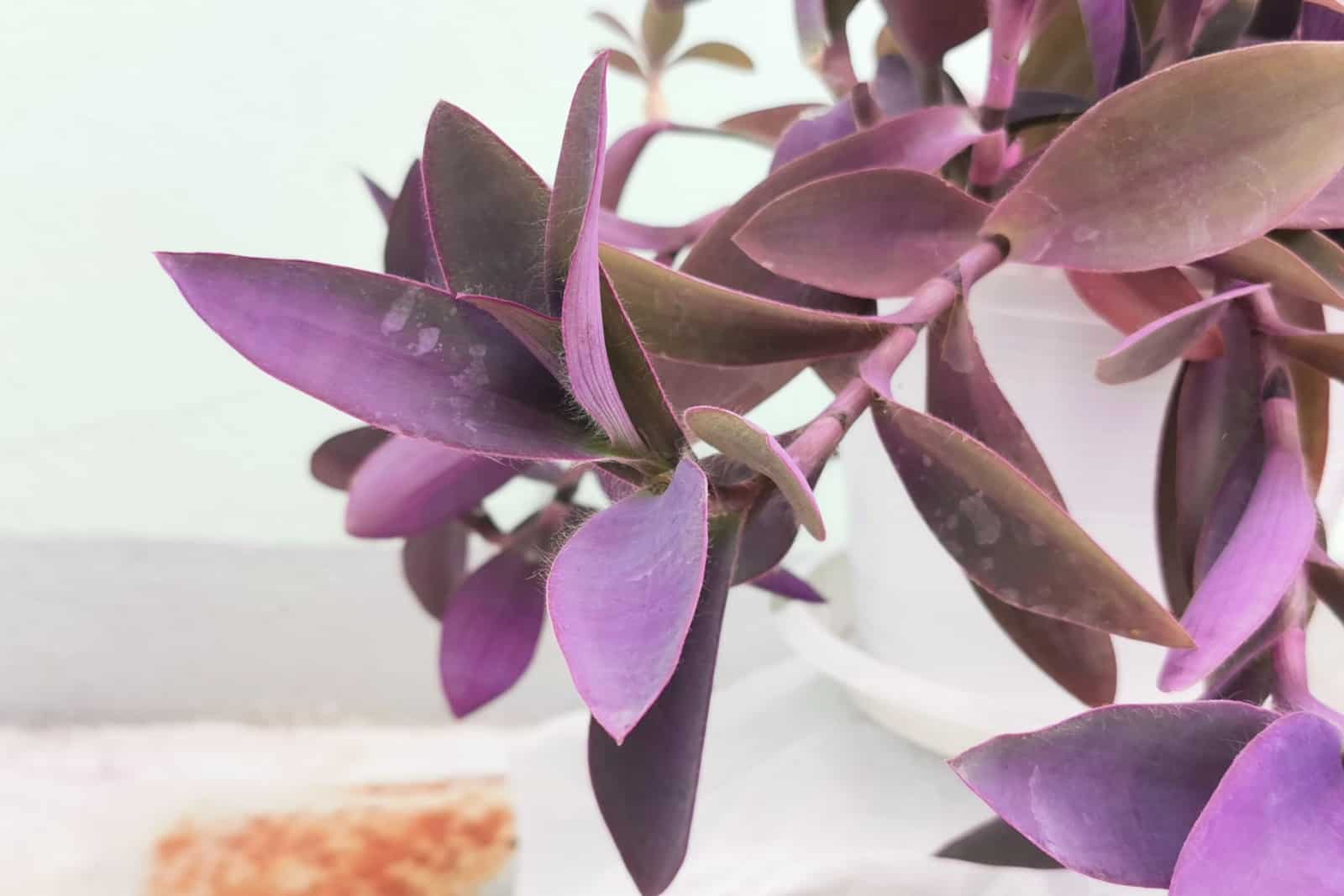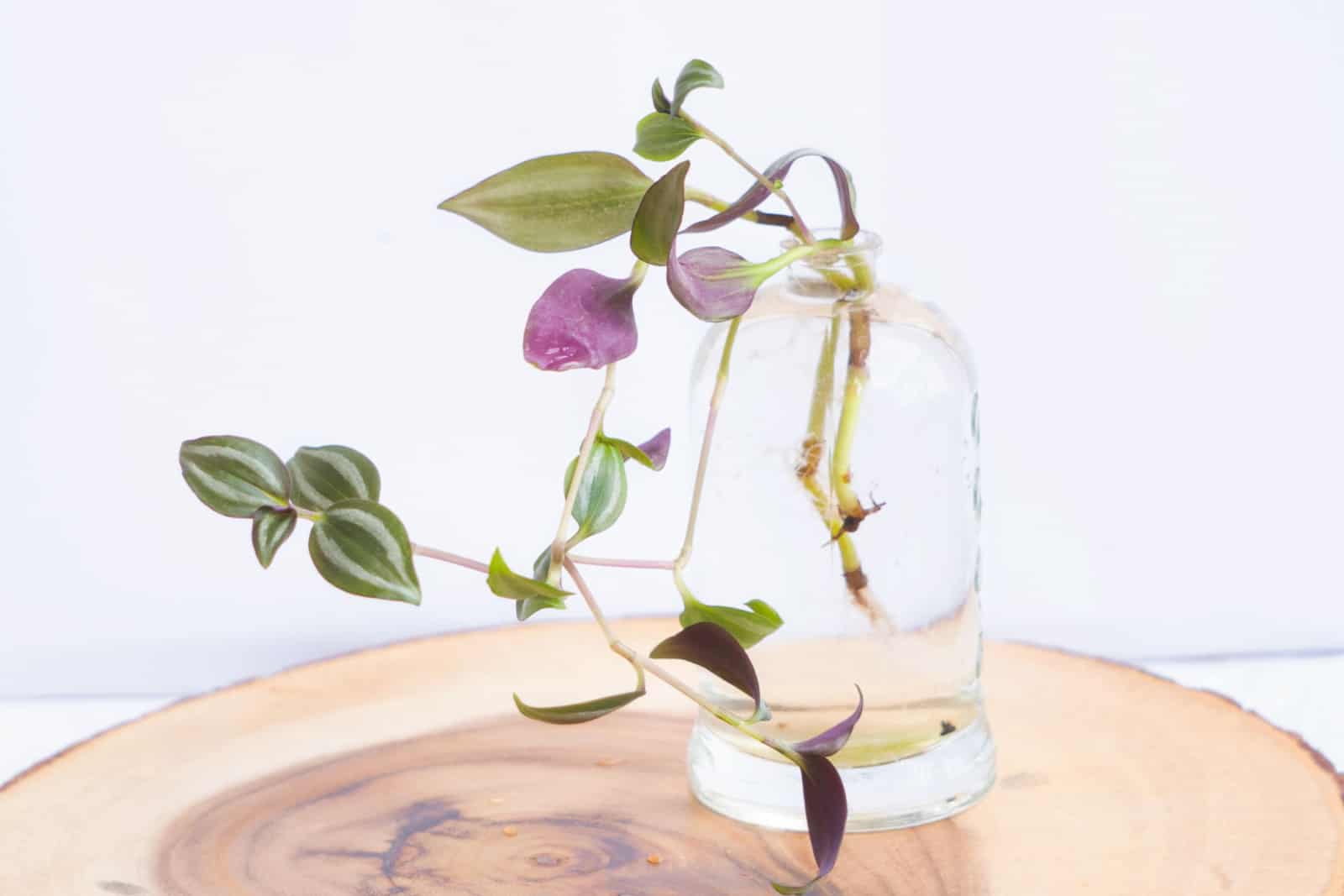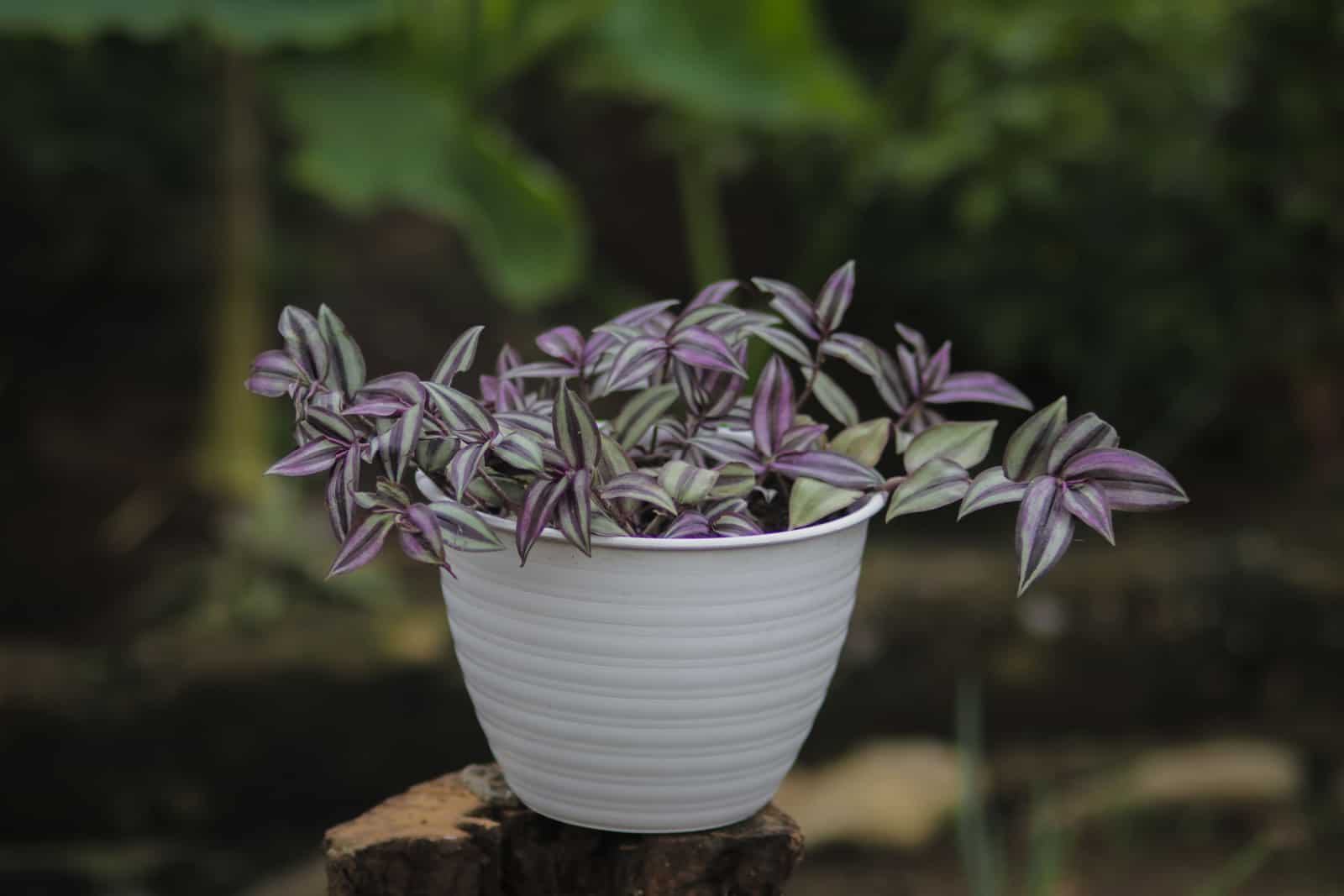There are 7 reasons why inch plants, or Tradescantias, make great indoor plants.
1. They don’t really need you for propagation
2. They can thrive on a bit of neglect
3. Inch plants look breathtaking
4. You can grow them as vining plants
5. You can prune them into a more compact shape
6. They’re robust
7. They’re widely available
The Story Behind The Nicknames
Let’s start with the controversial nickname, Wandering Jew. Some time ago, this was the most frequently used name for the Tradescantia zebrina and it was thought to have biblical roots, i.e., inspired by the tale of the Israelites’ desert wanderings.
Nowadays, it’s believed that the nickname is related to a made-up character who mocked Jesus on his way to Golgotha and was doomed to wander the earth until Jesus’ second coming. People decided to use Wandering Dude instead.
As for another of its nicknames, the inch plant doesn’t refer to the size of the plant or its leaves, but rather to the distance between the nodes on the stem.
The third common nickname for this Tradescantia is Spiderwort. When you cut the inch plant stem, the sap dries out in threads that resemble spider webs.
The Natural Habitat Of The Inch Plant
Tradescantia plants, aka inch plants, originally grew in North and South America, and can be found growing in various terrain, such as meadows, woodland, and along riverbanks.
Believe it or not, the inch plant is considered invasive in some parts of the Pacific.
What’s So Special About The Inch Plant?
The nicknames above refer to three Tradescantia species: zebrina, pallida, and fluminensis.
The first one, zebrina, is renowned for its rich green foliage with silver stripes and maroon undersides. Yes, the stripes are the reason it got its name.
The second one, pallida, features dark purple foliage and bright blossoms, hence the name Purple Heart.
The fluminensis variety has deep green foliage and white three-petalled blooms. This is one of the most invasive Spiderwort species.
How Much Light Does An Inch Plant Need?
The Tradescantia zebrina enjoys bright light as long as it’s also indirect. Strong sun rays can harm this plant so you’ll need to find a spot near an east-facing window for your inch plant to thrive.
I rotate my inch plant every now and then so that each side gets enough sunlight.
Never keep your inch plant in low light because it could lose its vibrant colors; in most cases, the silver streaks completely disappear if the plant is not given enough light. Increasing light levels is an excellent way to preserve colors and enhance blooming.
Soil Requirements
Inch plants are super easy to maintain and aren’t fussy over soil types. You can use a standard potting mix and, as long as it’s free-draining, you won’t have any problems. Inch plants have a pretty fast growth rate; from my experience, they do best if repotted every spring.
When replanting your Wandering Dude, don’t use pots that are too large (2-3 inches larger than the current one will suffice).
Fertilizing
One of the best things about inch plants is that they don’t require regular fertilization to flourish. Even though many growers decide not to feed them at all, I give my inch plant a nutrient boost every two months during the growing season.
One more thing, never use fertilizers at full strength; dilute them in water before applying them to avoid burns.
When And How To Water An Inch Plant
You need to stick to two rules when watering your Wandering dude: never allow its growing substrate to dry entirely, and water when the top 2 inches dry out.
Misting has proven to be an excellent technique for maintaining soil moisture and humidity around the plant.
Control The Growth
The Wandering Dude plant is a vigorous grower with a fast growth rate, so controlling its growth is an essential part of its care. If you want to maintain a more compact shape, then you should trim the branches regularly.
Always clean the cutting tools before you trim; I use rubbing alcohol or bleach.
Don’t worry if you cut more than you should; the Wandering Dude is a forgiving plant and will get back on track in no time.
Pests And Diseases
Even though the Wandering Dude isn’t susceptible to pests, spider mites can end up paying a visit, especially if the plant is weak for any reason. If you keep your inch plant healthy and spray it with neem oil from time to time, you can deter annoying spider mites.
Just like all other houseplants, Inch plants are sensitive to root rot. Prevention is crucial because plants need a lot of time to recover even if the disease is caught early. So, ensure a free-draining potting mix and water your Wandering dude when the top 2 inches of the soil dry out.
How To Propagate The Inch Plant
You can propagate your inch plant using its stem cuttings and a rooting medium of either soil or water. Here’s how:
1. Let’s start with taking the cutting. Your first goal is to figure out where the node is. You are actually looking for a part of your inch plant where the leaf connects to the stem. It looks kind of like a small bump. Now just pinch off the stem right under the node.
2. For water propagation, simply stick your inch plant cuttings in a glass of water, making sure the leaves are above the water line.
For soil propagation, put the inch plant cuttings in a pot filled with free-draining and porous soil mix.
3. Give the Wandering Dude stem cutting a lot of bright indirect light, and transplant it into a larger pot with a suitable soil mix when the roots are a few inches long.
Inch Plants And Pets
According to the ASPCA, all Tradescantia varieties are toxic to pets. Inch plant poisoning results in dermatitis. Your furry friend most likely won’t be affected if it ingests smaller quantities. However, I recommend consulting your veterinarian and showing them a portion of your inch plant just to be safe.
Where To Buy An Inch Plant
The answer is simple: anywhere! Trust me, at least one of your neighbors will likely be growing an inch plant because they’re nearly indestructible. I’m sure they’ll be delighted to give you a cutting.
If you aren’t lucky enough to find one in your neighborhood, local plant stores will almost certainly have the inch plant on their shelves.
Tradescantias are also available online. The great thing is that once you get yourself a Wandering Dude, the possibilities you’ll need to look for it again are almost zero.
Honestly, I don’t know anyone who has killed an inch plant. If you don’t have a green thumb, don’t worry, your Wandering Dude will forgive you if you forget about it for a while or every growing condition isn’t perfect.
What else could you ask for from a single plant?! The inch plant definitely has it all.

